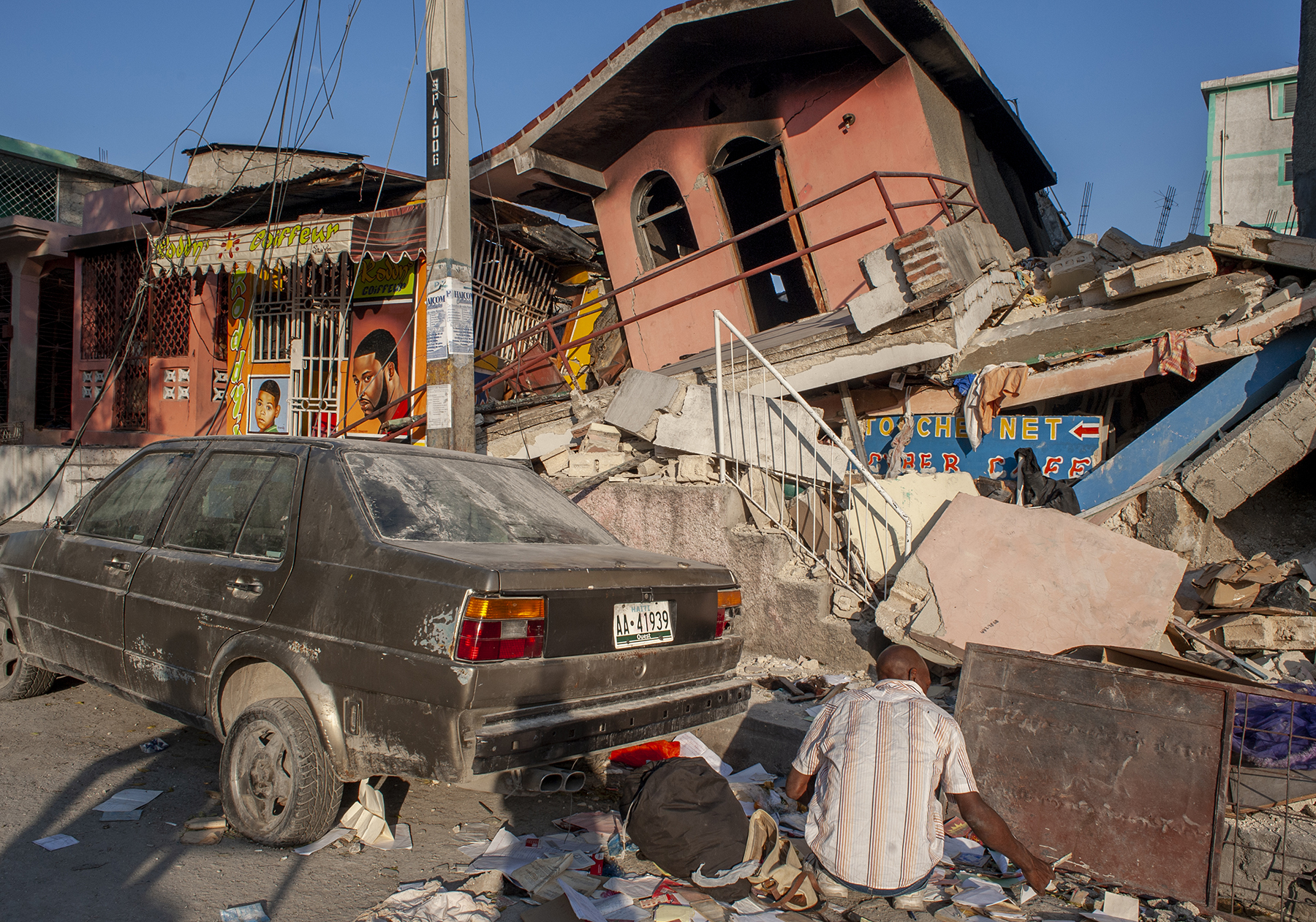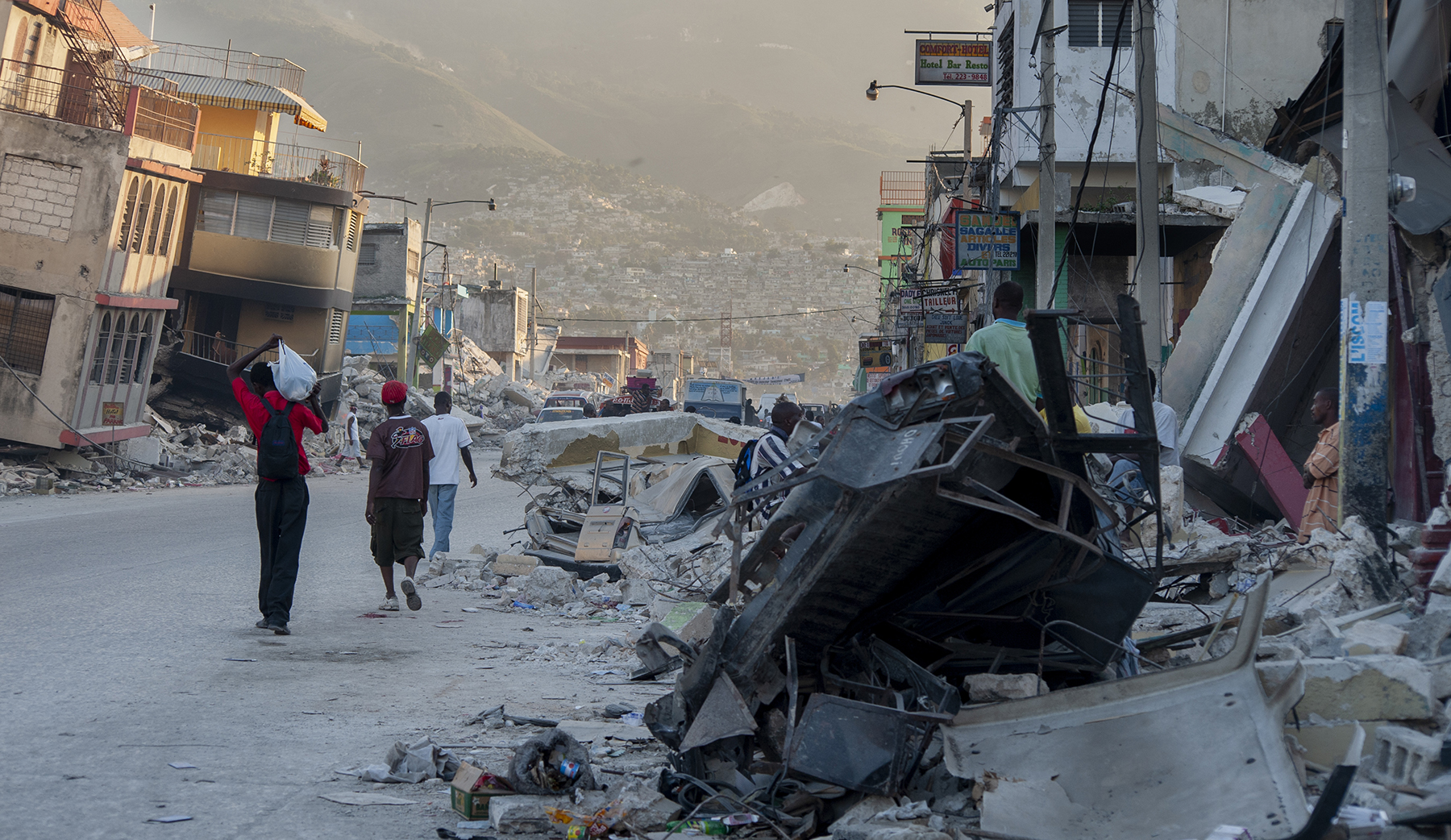 Leah Gordon, Getty Images
Leah Gordon, Getty Images Before the devastating January 2010 earthquake in Haiti, which killed an estimated 300,000 people, the Caribbean nation’s significant seismic hazard was not well known.
This lack of awareness, combined with the high vulnerability of Haitian buildings, contributed to the widespread seismic catastrophe, says Marc-Ansy Laguerre, Ph.D., a postdoctoral associate in civil and environmental engineering at Rice University in Texas. After 2010, it became clear that Haiti was at risk, especially from a lack of seismic building codes and the poor quality of materials used in many Haitian buildings, says Laguerre, who was born in Haiti and earned his bachelor’s degree in civil engineering from the State University of Haiti.
Further reading:
- Tragedy strikes as Myanmar earthquake again highlights importance of resilience
- How to integrate resilience into structural design
- Open-source simulation software boosts earthquake resilience
Most buildings in Haiti are relatively small – just one to three stories for residential and nonresidential structures, Laguerre says. Many of those buildings have been designed only for gravity loads, not lateral resistance, he adds, and the reinforced-concrete columns in Haitian buildings often have only minimal reinforcement. This makes it difficult for the columns to absorb earthquake forces, meaning they collapse during seismic events rather than flexing or redistributing the energy, Laguerre explains.
Moreover, the concrete used in Haiti typically has an average strength of 1,300 pounds per square inch – less than half the strength of concrete used throughout the United States, explains Reginald DesRoches, Ph.D., NAE, F.SEI, Dist.M.ASCE, the president of Rice. DesRoches, also born in Haiti, previously served as the William and Stephanie Sick Dean of Engineering at Rice’s George R. Brown School of Engineering and Computing. He has been Laguerre’s adviser and mentor on a project to help strengthen seismic resistance in their native country.
While some builders in Haiti are now taking earthquake risks into account, others continue to construct buildings without considering seismic hazards, Laguerre says. And many buildings constructed prior to 2010 are still in use with no seismic improvements.
Concrete is the key
To address those issues, Laguerre and DesRoches – working with Mohammad Salehi, Ph.D., P.E., a consulting engineer at Simpson Gumpertz & Heger – conducted a comprehensive numerical analysis of the seismic vulnerability of reinforced-concrete structures in Haiti, completing this research over a period from 2019 to 2024. Salehi worked with Laguerre and DesRoches while doing postdoctoral research at Rice; SGH is not involved in the Haiti project.
Using software such as LS-DYNA and OpenSees, the three researchers created detailed 3D computer models of four common types of Haitian buildings and subjected them to simulated earthquakes to determine how best to retrofit those structures. The building types included one- and two-story residential structures and two- and three-story nonresidential buildings. The building types were tested against the ground motions generated by 11 simulated earthquakes, including a magnitude 7.2 quake that struck Haiti in August 2021, killing more than 2,000 people.
The retrofit systems studied included reinforced-concrete jacketing around existing columns – 75 millimeters thick for one-story, residential buildings and up to 150 millimeters thick for three-story, nonresidential structures. A pair of prestressed cables, 112 square millimeters, were simulated on the one-story residential building, while three cables of the same size were studied on the two-story residential structure. Likewise, simulated steel braces formed from hollow structural steel sections of various sizes were tested on the residential buildings.
For the two- and three-story nonresidential buildings, the team researched the use of buckling-restrained braces with core sections of 1,000 square millimeters and 2,500 square millimeters. Simulated shear walls were also examined on the nonresidential structures, measuring from 1.35 meters wide and 150 millimeters deep for the two-story buildings up to 1.8 meters wide by 300 millimeters deep on the three-story structure.
 Leah Gordon, Getty Images
Leah Gordon, Getty ImagesAll five retrofitting methods improved the seismic performance of the building types being studied, but the specific results varied, according to a Rice press release on the project.
For the residential buildings, the steel braces worked best when combined with the reinforced-concrete jacketing, Laguerre notes. For the larger, nonresidential buildings, a combination of buckling-restrained braces and shear walls “helped distribute earthquake forces more evenly, reducing the risk of collapse,” according to the press release.
The team’s research paper, “A Numerical Study on the Seismic Retrofit of Haitian Reinforced Concrete Building Frames,” was published in the Jan. 15, 2025, online issue of the journal Earthquake Spectra. The paper concluded that, given the “significant vulnerability” of reinforced-concrete structures in Haiti, “there is a clear and pressing need for widespread retrofitting across the country. … With the right implementation strategy, these retrofitting measures could play a crucial role in safeguarding Haitian communities from future seismic events.”
In search of a ‘deeper understanding’
Additional research is also necessary to gain “a deeper understanding of the retrofit effectiveness,” the team added. Accounting for uncertainties in material and structural properties could further improve this understanding across the wide array of reinforced-concrete buildings in Haiti.
Laguerre has given multiple presentations about these findings online and in at least two events on Haitian television. He also plans to teach a course on the topic at the State University of Haiti next year.
DesRoches adds that while this research was applied specifically to Haiti, there are other countries around the world with similar vulnerabilities, especially in the Caribbean, that could benefit from the findings.



